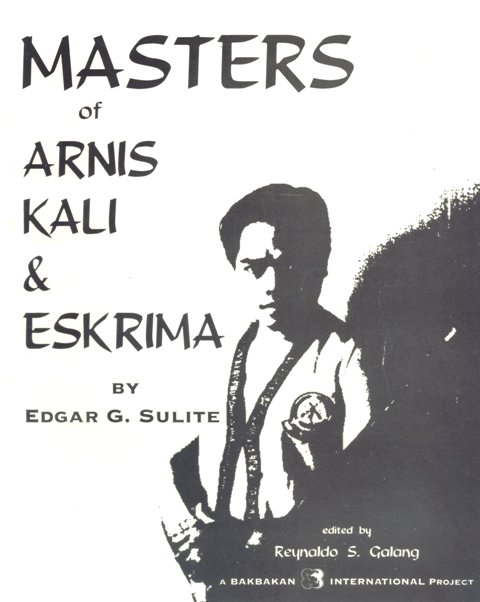
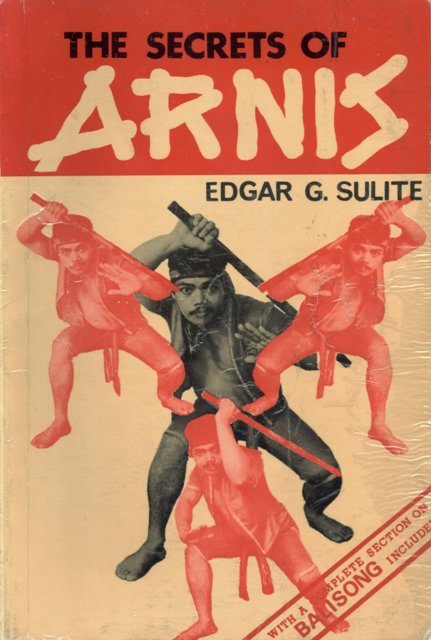
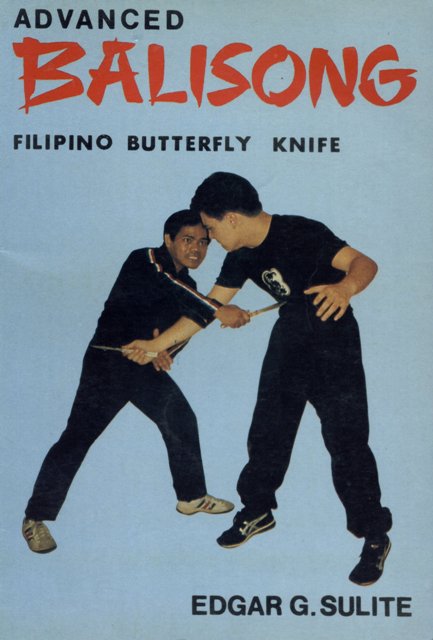
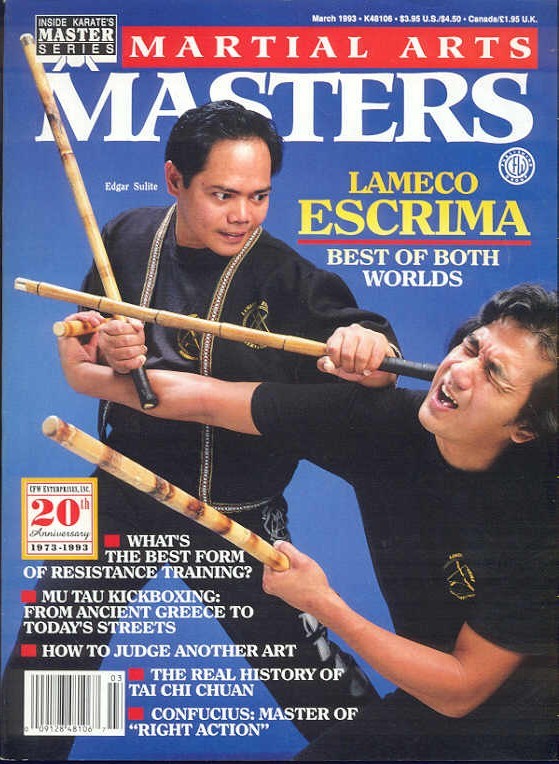
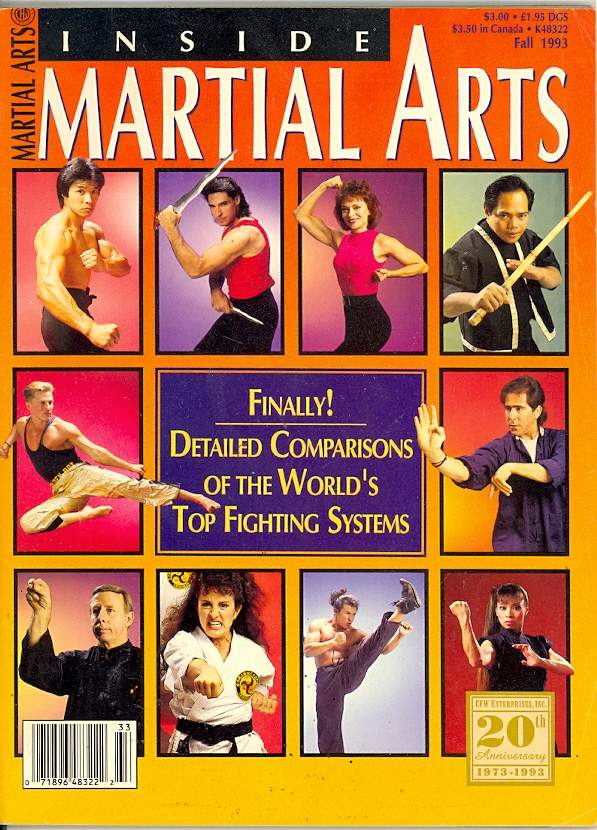





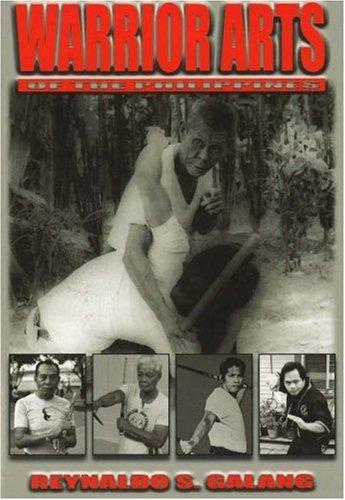



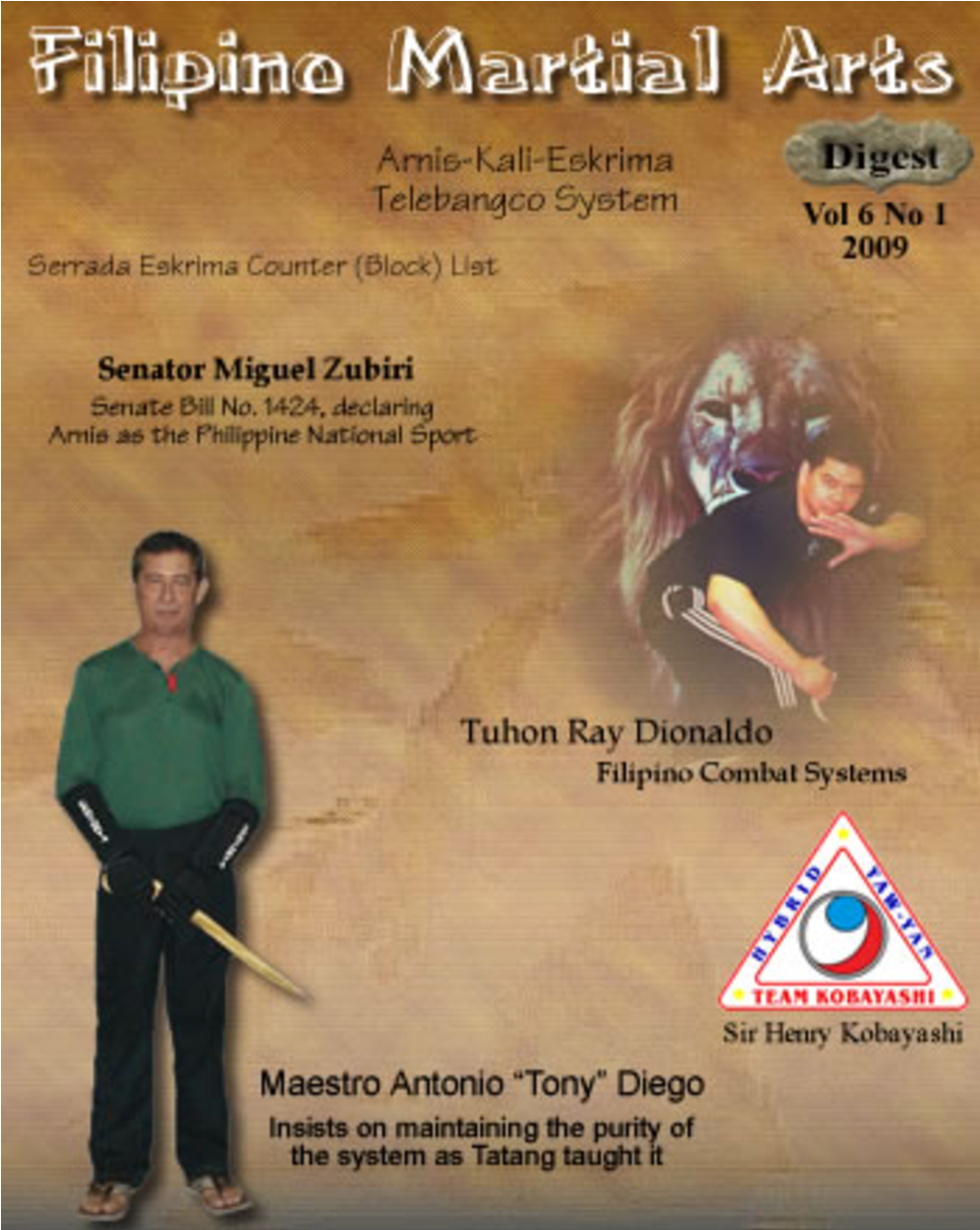










The Kapisanang Mandirigma Eskrima Training Institute

























The Original “Five Pillars” of Ilustrisimo:
Tony Diego, Master Yuli Romo, , Master Rey Galang Master, Christopher Ricketts (R.I.P) and Punong Guro Edgar Sulite (R.I.P).








Master Bruce Ricketts with his “Ninja” mask sitting with Grandmaster Ilustrisimo.
Located at Master Ricketts house in Alabang in the 1990′s.
Bakbakan Philippines and Master Christopher Ricketts
Bakbakan International is a martial arts association headquartered in Manila, Philippines and founded by Christopher Ricketts in 1964. It has chapters in Australia, Canada, and the United States. It also promoted the Masters of Arnis tour in Australia that featured Christopher Ricketts, Antonio Diego, Edgar Sulite, and Rey Galang.
The school teaches the following methods:
• Kali Ilustrisimo, which was developed by Antonio “Tatang” Ilustrisimo.
• The Tulisan Knife-Fighting System, which works as an offshoot of Kali Ilustrisimo and is based on technique rather than drill.
• The Sinawali Fighting System, which emphasizes ambidexterity and weapon mastery.
• Lameco Eskrima, developed by Edgar Sulite.
• The Sagasa Kickboxing System, which develops coordination, power, and reflexes.
• The Hagibis Combat System of close-quarter combat, which primarily emphasizes grappling, throwing, and tripping as means of disabling individual opponents where multiple opponents exist.
• Ngo Cho Kun Kung Fu, which emphasizes power, stamina, and concentration.
Its notable members are Tony Diego, Edgar Sulite, Alexander Co, Christopher Ricketts, Rey Galang, Dodong Sta. Iglesia, Miguel Zubiri, Doran Sordo, Ding Binay, Ronnie Ricketts, Rolly Maximo, Ramon Tulfo, Rey Dizer, Edgar Aristorenas, and Leonard A. Anderson.
The organization or its senior members have been featured in or written the following published works:
• September 1997 issue of Exotic Martial Arts of Southeast Asia
• Filipino Martial Culture by Mark V. Wiley
• Five Ancestor Fist Kung Fu by Alexander Co • Premiere Issue of Martial Arts Illustrated Magazine
• Masters of the Blade by Reynaldo S. Galang
• Warrior Arts of the Philippines by Reynaldo S. Galang
• Classic ARNIS – The Legacy of Placido Yambao by Reynaldo S. Galang
• Complete Sinawali Filipino Double Weapon Fighting by Reynaldo S. Galang
• The Secrets of Kalis Ilustrisimo: The Filipino Fighting Art Explained by Antonio Diego & Christopher Ricketts
• Masters of Arnis Kali & Eskrima by Edgar G. Sulite
• The Secerts of Arnis by Edgar G. Sulite
• Advanced Balisong by Edgar G. Sulite
• Inside Kung-Fu Magazine with Edgar G. Sulite
• Cinturon Negro Magazine with Edgar G. Sulite
Quote from a Master Ricketts interview:
Q: Firstly what is the history and aim of Bakbakan?
A: “Bakbakan means something along the lines of a free for all brawl. Bakbakan was founded in 1967 by a group of instructors from various styles of martial arts in the Philippines. Prior to the organization becoming a bastion of martial arts in the Philippines, the main objective of the original members was to elevate their fighting skills through constant full contact sparring.
Originally there were only six of us: Ding Binay, Rolly Maximo, Christian Gloria, Eddie Ben Alicante, Rey Vizer and myself. We would meet at my house in San Miguel Village in Makati, where my bedroom was our original gym.”

Punong Guro Sulite and Master Ricketts experimenting with sparring.
Located at Master Ricketts house in Alabang in the 1980′s.

Master Ricketts and Punong Guro Sulite experimenting with sparring.
Located at Griffith Park, Los Angeles Early 1980′s.
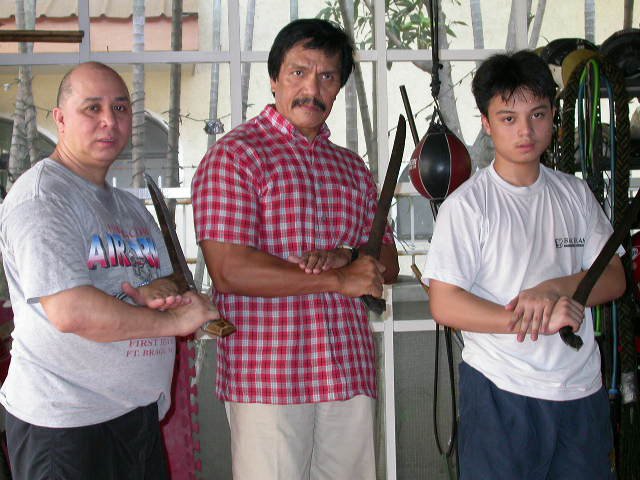
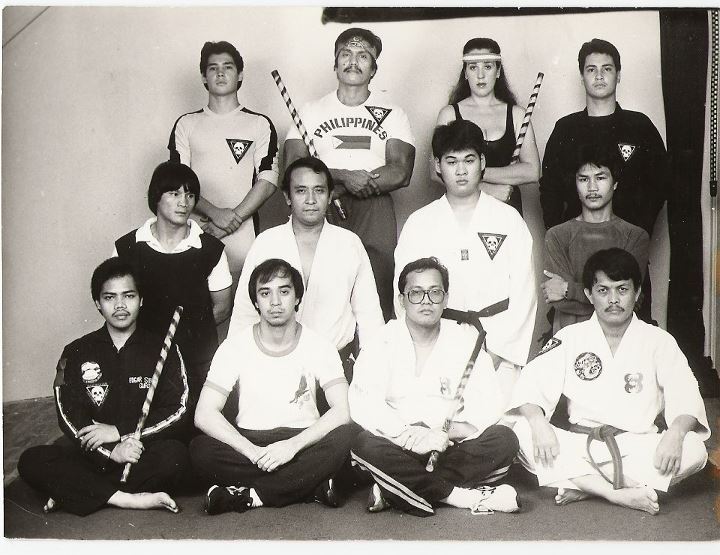
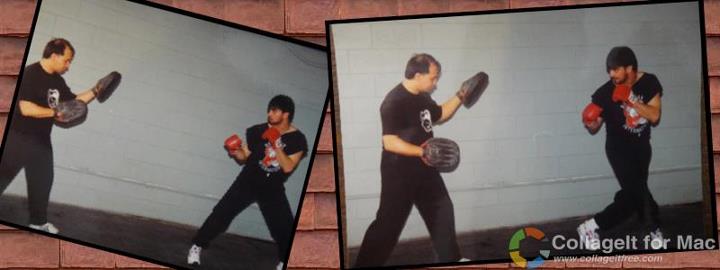
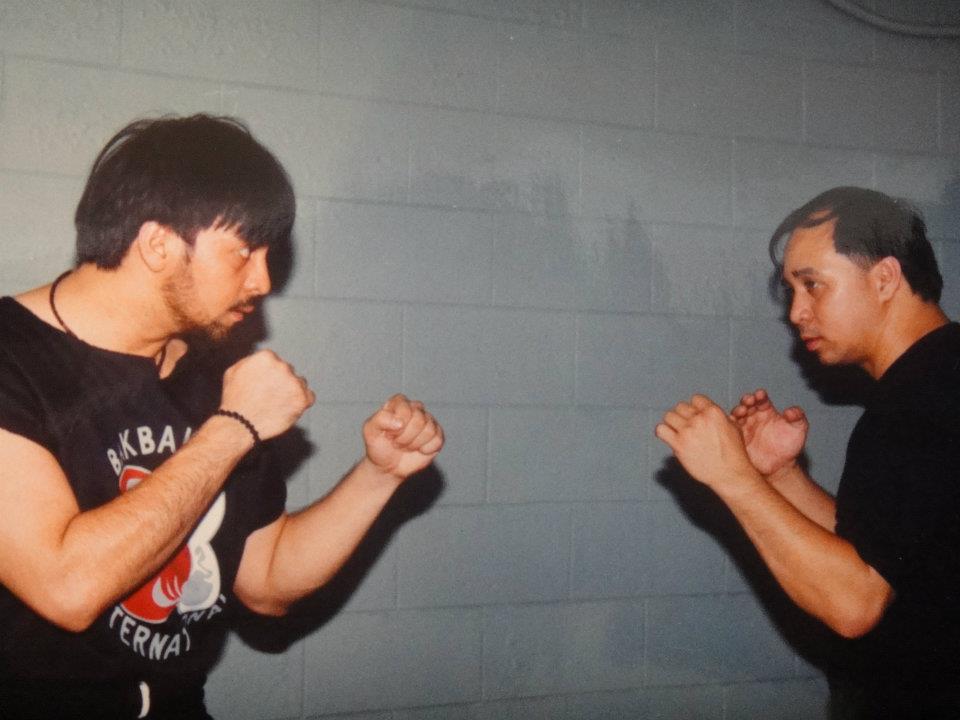
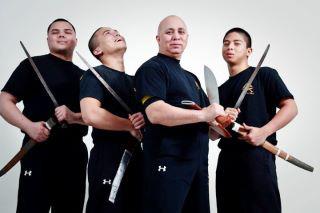
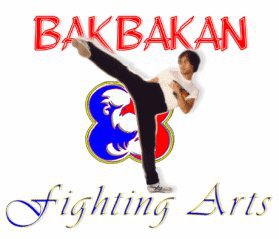
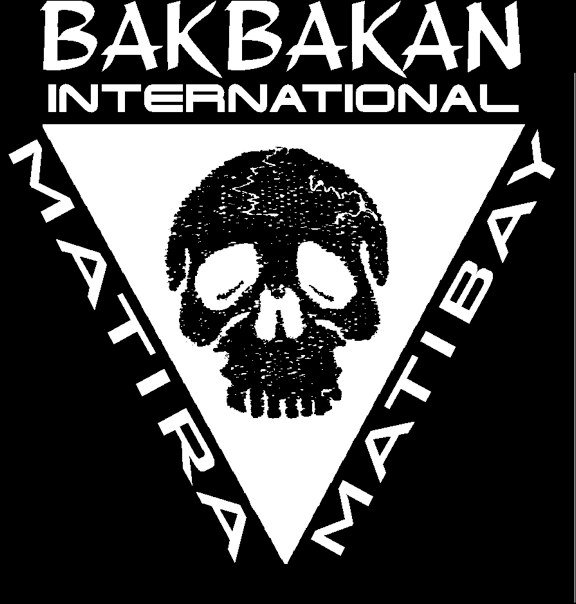
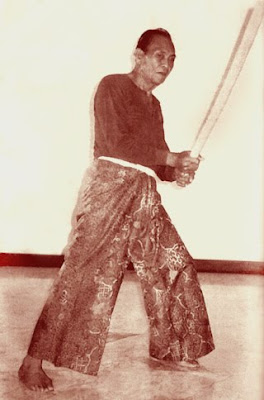
Grandmaster Antonio Ilustrisimo.
Located at Master Ricketts house in Alabang in the 1980′s.
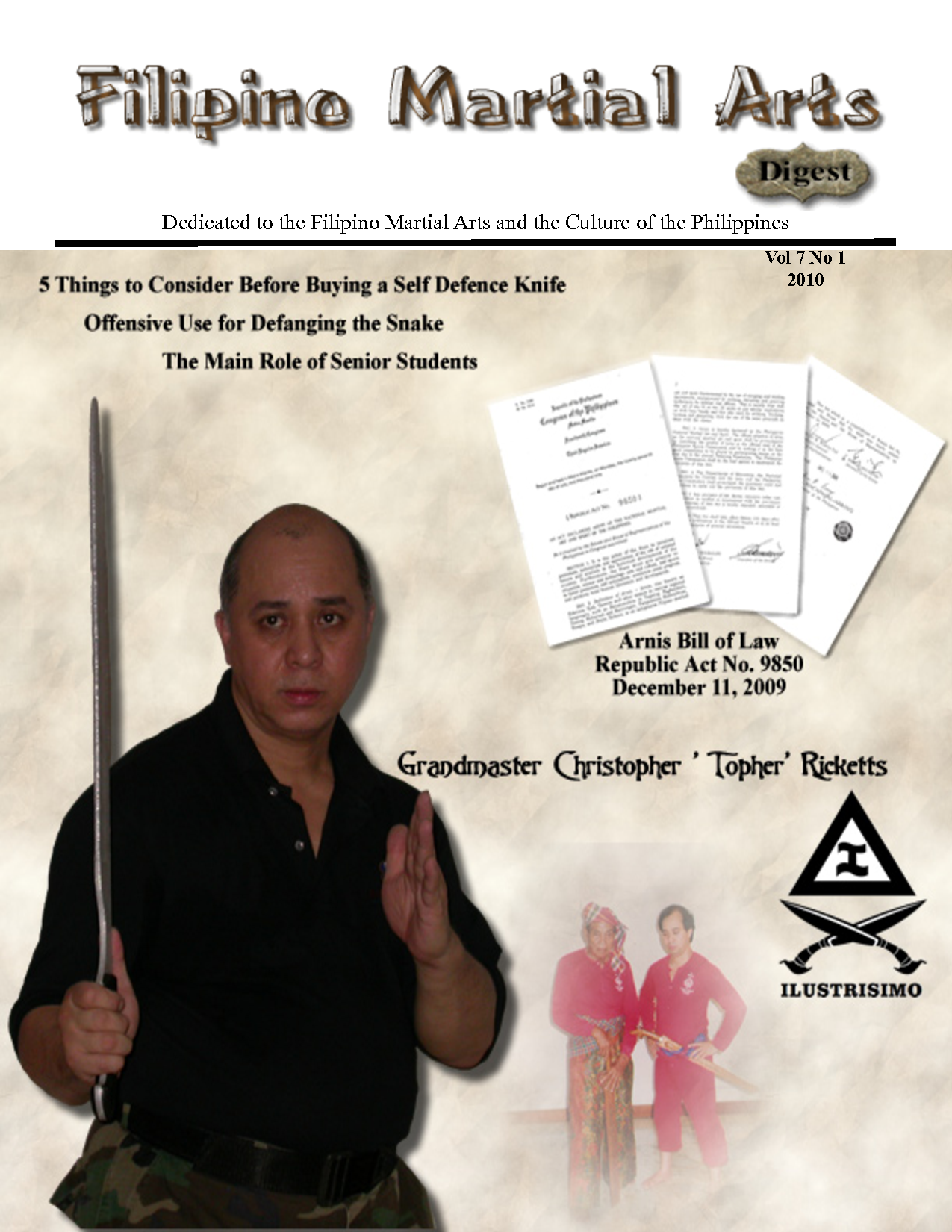
.UPCOMING EVENTS.
Hans Anton Tan
When it comes to a life or death situation, no other system is more combat proven than Kali Ilustrisimo. The Ilustrisimo family name is dreaded and respected in the toughest barrios of the Philippines due to the legacy of masters such as the late Antonio “Tatang” Ilustrisimo, his father Isidro Ilustrisimo and his uncle Melicio Ilustrisimo. This family is know for having successfully engaged in live blade confrontations and emerging victorious.
The current heir to the system is the humble, yet formidable, Master Antonio Diego who dedicated over 26 years of intensive training under “Tatang.” In the early days, in order to obtain advanced techniques, Master Diego had to get “Tatang” drunk, resulting in Master Diego being ordered to go to the kitchen to get a sharp knife and attack “Tatang” from various angles. No one other than Master Diego can justly represent Kali Ilustrisimo in its purest form.
Master Diego chooses only to have a handful of full time students and even fewer certified to represent him. Hans Anton Tan is one of those fortunate to be certified by Master Diego. Hans Anton Tan also trained under the late Punong Guro Edgar G. Sulite in Lameco Eskrima from 1990 to 1997 after being referred by his teacher in the Philippines, one of Lameco Eskrima International’s first instructors, Honesto “Jun” Nunez. Hans Anton Tan was not only a private student of Punong Guro and a senior member of the Sulite Orehenal Group, he was also a close friend. It is the Kali Ilustrisimo system that has most influenced Lameco Eskrima’s advanced sword techniques. Punong Guro himself trained under “Tatang” for nine years prior to coming to the United States. This seminar is highly recommended for any martial arts practioner, especially if you have any kind of bladed weapons interest. This seminar will be an eye opener for all kali practioners, see for yourself why several established eskrima systems acknowledge lineage or influence from the Kali Ilustrisimo system. Experience first hand techniques such as Estrella, Media Fraile, Boca Y Lobo and Warwok. This IS no frills Combat Ilustrisimo – expand your arsenal and don’t miss this rare opportunity.
Bring eskrima sticks, training knives, workout clothes and an open mind. Sparring helmets and traditional Filipino blades will be available so don’t forget to bring extra cash. Hans Anton Tan is only in the United States once a year so don’t miss out.
Open Weapon Forms
9:00am to 10:30am
Competitors may perform up to one minute maximum. Open to all ages.
Knife Competition
10:30am to 12:00pm
Competitors must be 18 years or older.
Single Knife. Double Elimination. Point System.
Demonstrations
12:00pm to 1:00pm
The Way of the Orient Martial Arts School
Shooto Fighting (Ron Balicki)
Cold Steel (Lynn Thompson)
Lameco Eskrima International
Eskrima Competition
1:00pm to 6:00pm
Competitors must be 18 years or older.
Single Stick. Double Elimination
Closing Ceremonies
Awards will be Given after each Division.
For tournament information, please contact (805) 658-7217.
Tickets : $5.00 presale / $7.00 door
Facilty Provided By :
The Way of the Orient Martial Arts School
2750 East Main Street
Ventura, CA 93003
A Portion of the Proceeds will be Donated to the Autistic Society. Please Help Us Help Them.
Come and enjoy a day full of fun and activities for the whole family.
Come and enjoy a day full of fun and activities for the whole family.
Come and enjoy a day full of fun and activities for the whole family. A cultural affair filled with lots of free food, entertainment and prizes.
The Health Forum is a continuing education program of APHVC, Inc., providing low income families and those who do not have insurance. The Forum is free and everyone is invited. Free foods and entertainment will be provided.
http://www.aphcv.org/
Hot Import Nights – one of Northern California’s Hottest Import Show of 1999. Various Acts to be announced, Import Industry Vendors, Lifestyle Vendors, Show Cars and More.
Alay Sa Kababayan… the Biggest Philippine Fiesta in Southern California. Headlining this event are Gary V., Leo Martinez and Giselle Sanchez with special appearances by surprise guests throughout the day. Featuring Miss and Mrs. Expo, Cultural Shows, Karaoke Contest, Ballroom Dancing, Kids Fun Center, Food and Trade Booths, Kids and Teen Pageants, Hip Hop Dance Contest, Recognition Awards amd Business Networking. Great fun for the whole family.
Ticket prices are $10 Adult (11-up), $5 Child (5-10) and Children under 5 are FREE. Portion of the proceeds will go to the Philippine National Red Cross.
Hans Anton Tan
When it comes to a life or death situation, no other system is more combat proven than Kali Ilustrisimo. The Ilustrisimo family name is dreaded and respected in the toughest barrios of the Philippines due to the legacy of masters such as the late Antonio “Tatang” Ilustrisimo, his father Isidro Ilustrisimo and his uncle Melicio Ilustrisimo. This family is know for having successfully engaged in live blade confrontations and emerging victorious.
The current heir to the system is the humble, yet formidable, Master Antonio Diego who dedicated over 26 years of intensive training under “Tatang.” In the early days, in order to obtain advanced techniques, Master Diego had to get “Tatang” drunk, resulting in Master Diego being ordered to go to the kitchen to get a sharp knife and attack “Tatang” from various angles. No one other than Master Diego can justly represent Kali Ilustrisimo in its purest form.
Master Diego chooses only to have a handful of full time students and even fewer certified to represent him. Hans Anton Tan is one of those fortunate to be certified by Master Diego. Hans Anton Tan also trained under the late Punong Guro Edgar G. Sulite in Lameco Eskrima from 1990 to 1997 after being referred by his teacher in the Philippines, one of Lameco Eskrima International’s first instructors, Honesto “Jun” Nunez. Hans Anton Tan was not only a private student of Punong Guro and a senior member of the Sulite Orehenal Group, he was also a close friend. It is the Kali Ilustrisimo system that has most influenced Lameco Eskrima’s advanced sword techniques. Punong Guro himself trained under “Tatang” for nine years prior to coming to the United States. This seminar is highly recommended for any martial arts practioner, especially if you have any kind of bladed weapons interest. This seminar will be an eye opener for all kali practioners, see for yourself why several established eskrima systems acknowledge lineage or influence from the Kali Ilustrisimo system. Experience first hand techniques such as Estrella, Media Fraile, Boca Y Lobo and Warwok. This IS no frills Combat Ilustrisimo – expand your arsenal and don’t miss this rare opportunity.
Bring eskrima sticks, training knives, workout clothes and an open mind. Sparring helmets and traditional Filipino blades will be available so don’t forget to bring extra cash. Hans Anton Tan is only in the United States once a year so don’t miss out.
Master Christopher Ricketts (Philippines)
Master Reynaldo Galang (New Jersey)
Master Eugene Pelegrin (Vancouver)
Sifu Alex Co (Philippines)
A special weekend seminar will be open to the general public and will be conducted by Sifu Alex Co on the arts of Ngo Cho Kun and Praying Mantis Ku and by Masters Christopher Ricketts, Rey Galang and Eugene Pelegrin on Bakbakan Kali Ilustrisimo and Sagasa Kickboxing.
The workshop fee is $25. Certificate of attendance will be given to each participant.
Don’t miss this rare opportunity to train and learn from these world renowned instructors and close affiliates of Lameco Eskrima International – Sulite Orehenal Group.

Discover the monthly seminar and competition that brings together participants from different fighting arts and styles in A Gathering of Warriors. Experience the bond of brotherhood that transcends the boundaries of style, culture, and race. Be a part of … The Gathering.
Held at the North American Headquarters of BAKBAKAN INTERNATIONAL, this monthly workshop/seminar features the art of BAKBAKAN KALI Ilustrisimo – one of the Philippines’ most respected and renowned style of fighting arts. Learn the techniques of the art of BAKBAKAN KALI from Master Rey Galang – one of the few Certified Senior Instructors of the late Grandmaster Antonio Tatang Ilustrisimo. Encounter the art of BAKBAKAN KALI. Discover the combative principles, strategy and techniques of this highly regarded and respected combat art.
Enjoy the experience and fellowship of A Gathering of Warriors. Participate in The Gathering’s unique and fast-paced tournament that brings together the best of the Philippine fighting styles, competing against each other in the spirit and bond of a brotherhood of warriors. Enter in any or all of the different fighting divisions: Solo Baston (Single Stick), Doble Baston (Double Stick), Espada y Daga (Sword and Dagger) and Tagis-Talim (Knife Fighting).
1998 Seminar / Workshop SCHEDULE:
JAN 31, FEB 28, MAR 28, APR 25, MAY 30, JUN 27, JUL 25, AUG 29, SEP 26, OCT 31
NOV 21 and DEC 19.
Guro Reynaldo S. Galang
Senior Instructor, Kali Ilustrisimo
Senior Instructor, Lameco Eskrima
International Director, Bakbakan International
Chief Instructor, Tulisan (The Knife Fighting Art of Kali Ilustrisimo)
Learn the techniques of the art of Kali Ilustrisimo from one of the few Certified Senior Instructors of Grandmaster Antonio “Tatang” Ilustrisimo’s devastating fighting art. Discover the art of Kali Ilustrisimo, its combative principles and concepts and learn why it is highly regarded and respected by the Grandmasters of the Warrior Arts of the Philippines. This seminar will cover the drills, techniques and priciples of double stick, single stick and knife-fighting concepts and strategies.
Inosanto Academy of Martial Arts
7298 West Manchester Ave., Suite B
Los Angeles, CA 90045
310.348.9944
310.417.8985
Cost: $35.00 (No Checks/Credit Cards)
Bring eskrima sticks, training swords and knives, hand, arm and face protectors.
LAMECO BACKYARD GROUP LIST A.K.A. LAMECO SOG (Sulite Orihinal Group)
Due to the amount of challenges that were occuring during the period. Punong Guro Sulite had a need to train a group that could confidently address this issue on his behalf . Punong Guro Sulite already had a number of victorious “encounters” since his arrival in the United States. He felt it was time to pass some of that skill to a select few. He had training methods and techniques in his arsenal that were considered “secrets” that he did not want to share with the general public. Even going so far as to have the group swear an oath of secrecy. Thus the “Backyard Group” was born. The members of the “Backyard Group” became Punong Guro Sulites’ Eskrima experiments where regular sparring was the norm.
Guro Lowell Pueblos
Eric Koh
Ron Balicki: http://www.ronbalicki.com/2011/
Mar Elepano
Hospecio “Bud” Balani, jr.: http://backyardeskrima.com/?p=468
Rem V. Cruz
Pelix Valensia
Dino Flores: http://backyardeskrima.com/?page_id=52
Arnold Noche: http://backyardeskrima.com/?p=457
Hans Anton Tan: http://backyardeskrima.com/?cat=52
Darryl Goldberg
Dave Gould: https://www.facebook.com/profile.php?id=100001877160364
Steve Grody: http://stevegrody.blogspot.com
Elmer “Bong” Hebia
Roger Agbulos
Jason Ancheta
Marc F. Denny: http://dogbrothers.com
Steve Tarani: http://stevetarani.com
Phil Rapagna: http://www.trs-usa.org/html/training_director.html
Choy Flores: http://backyardeskrima.com/?p=872
Gary Quan: http://backyardeskrima.com/?p=1380
Joel ‘”Jay” Adriatico
Bryant Emerson
Sung Han Kim
Rodney Wilson
Pantaleon ” Mang Leo” Revilles, jr. ( R.I.P. )

Taken in 1995 at Tom Belt’s school in Altadena, Ca
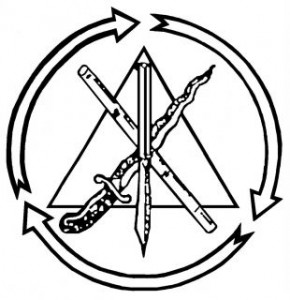
Lameco Eskrima is a Warrior Art of the Philippines founded by the late Punong Guro Edgar Sulite . It was based on his training and experience with various Master Eskrimadors. The most heavy influence was from Grandmaster Jose Caballero and Grandmaster Antonio Ilustrisimo. In private Punong Guro Sulite that in a real fight, these these two systems were the only arts he drew upon. This fact was the foundation for his Lameco Backyard Group training method that included sparring at different intensity levels on a regular basis.
The Philippines is an archipelago of over 7,100 different islands broken up into three main regions: Luzon, Visayas and Mindanao. Within each of those regions lies numerous styles of the Philippine Fighting Arts. There are some systems which specialize in long range fighting (LARGO), while others specialize in medium range fighting (MEDIO), and still others which specialize in close range fighting (CORTO).
An acronym for the synthesis of the three ranges of combat (LARGO, MEDIO and CORTO) were combined to form LAMECO.
| Acronym | Range | Measurement |
|---|---|---|
| LA | Largo (Long Range) | Dulo to Dulo (Tip to Tip) |
| ME | Medio (Medium Range) | Pulso to Pulso (Wrist to Wrist) |
| CO | Corto (Close Range) | Balikat to Balikat (Shoulder to Shoulder) |
LAMECO is a composition of five major systems and six minor systems from the Philippines.
1) Kali Illustrisimo (Antonio “Tatang” Illustrisimo)
2) De Campo uno-dos-tres Orehinal (Jose D. Caballero)
3) Kali Pekiti-Tirsia (Leo T. Gaje Jr.)
4) Modernos Largo (Jesus Abella / Pablicito Cabahug)
5) Sulite Rapelon (Helacrio Sulite Sr.)
LAMECO is a balanced synthesis of the many effective teachings and styles which the late Punong Guro Edgar G. Sulite has come to master in the span of his life.
LAMECO has emphasis on the totality of the human being – mind, body, spirit – not just the physical elements alone.
ATTENTION, INTENTION, VISUALIZATION and COMPLETE FOCUS are the integral components of the LAMECO Training System.
The LAMECO logo represents the following items.
| Symbol | Representation |
|---|---|
| Arrows | The Flow of Nature. |
| Balisong Knife | Luzon – Northern Philippines. |
| Eskrima Stick | Visayas – Central Philippines. |
| Kris Sword | Mindanao – Southern Philippines. |
| Triangle | The Integration of Mind, Body and Spirit. |
One of the characteristics of Filipino martial arts is the use of weapons from the very beginning of training. The common weapon is a rattan stick, also called a cane or baston. These sticks vary in length from about 26 inches to as much as 38 inches in length or more. The weapons can vary in weight and thickness depending on the preference of the practitioner. However the Single Sword is the soul of this Warrior Art. Even when using a Rattan stick, members of Punong Guro Sulites Backyard Group were always told to treat the stick as a sword.
Lameco uses Double and single Stick, Double and single Dagger, Sword and Dagger, Sword, Staff, Handkerchief, and Empty Hands. Lameco Eskrima is a synthesis of five major and six minor systems of Eskrima.
Lameco employs training drills called Laban Laro (Play Fighting). Laban Laro allows the escrimador to come as close to real combat as possible without injury. It is also designed to get an uncountable number of repetitions in a short period of time.
Through his constant efforts for developing new training innovations, Edgar devised unique armor for the hands and forearms that allowed practitioners to safely train more realistically.
At a young age Edgar Sulite’s father exposed him to the Filipino Martial Arts, himself being a boxer and Arnisador. Growing up in the Barrios of the Philippines, Edgar witnessed many skirmishes settled blade against blade.
1. De Campo 1-2-3 Orehenal (GM Jose D. Caballero)
2. Kalis Ilustrisimo (GM Antonio “Tatang” Ilustrisimo)
3. Pekiti-Tirsia Kali (Tuhon Leo Tortal Gaje Jr.)
4. Modernos Largos (GM Jesus Abella & GM Pablicito “Pabling” Cabahug)
5. Sulite-Rapelon (GM Helacrio L. Sulite Sr.).
1. Doce Pares (GM Diony Cañete)
2. Balintawak (GM Johnny Chiuten)
3. Lapunti Arnis De Abanico (GM Felimon E. Caburnay)
4. Siete Teros Serado – Serado no Puede Entrar (GM Marcilino Ancheta)
5. Abanico De Sungkiti (GM Billy Baaclo)
6. Tres Personas Eskrima De Combate (GM Maj. Timoteo E. Maranga).
This article was reprinted with the author’s permission from the Souvenir Edition of Arnisador Magazine published by Goodwill Publications Limited. More information about the magazine can be obtained by calling Peter Morgan in London at +44 (0) 171-895 0800.
Saturday, June 1st, 1996
LAMECO: Legacy of Steel
By Steve Tarani
Swollen knuckles, bleeding forearms and battered shins – two warriors face off in a clearing. Sharp strikes of clashing rattan mix with the drawl of heavy breathing and shuffling feet. Intensely focused and alert, both combatants melt into the sweltering humidity. Glistening beads of sweat roll down to fingers wrought with open blisters. Ignoring the searing pain, each man continues fighting. Skillfully, cautiously – each life hinges upon immediate reaction to a deadly salvo of crushing blows.
Such is the way of life of an Arnisador – a path chosen by Punong Guro Edgar G. Sulite. Since and before the days of Magellan, the Filipino martial arts have proven themselves highly effective standing in defiance of determined warring tribes, rabid Conquistadors and greedy foreign hordes.
The LAMECO system, systematically structured and easily assimilatable according to modern training methods, is the stainless steel link in an unbroken chain of training succession.
Great-grandfather to grandfather to father to son, a continual succession of knowledge and commitment breathes life into the ancient art from those very early days of foreign aggression to the current days of domestic violence. The heritage of combat-ready warriors runs deeply through the bloodline of the Sulite family tree.
Born on September 25, 1957 in a rural province on the Visayan Island of Leyte, Tacloban City, Punong Guro Edgar G. Sulite was raised by a family of martial arts devotees in a rugged barrio neighborhood where deadly brawls and Bolo knife skirmishes were commonplace.
In other martial arts, the attainment of a certain level automatically designates the title Master or Grandmaster. In the Philippines, there are certain norms to be satisfied before one can be called and accepted as a Master or Grandmaster.
After expressing great interest in the Filipino fighting arts at a very early age, young Edgar was introduced to the rigorous training by his own father – Grandmaster Helacrio Sulite Sr.
Grandmaster Helacrio first studied with his father Grandmaster Timoteo Sulite in the 1930s. Grandmaster Helacrio went on to further enhance his skills under the tutelage of several other Arnis masters of varied styles (such as the late Grandmaster Melicio Ilustrisimo and Master Almario of Cebu among others.)
Grandmaster Timoteo Sulite’s instructors were active in the mid-19th century and their grandfathers recalled stories of their grandfathers which included the defeat of several infamous Spanish conquistadors using the very same styles of Arnis that have been meticulously passed down to Punong Guro Edgar G. Sulite who, in turn, continues the solemn tradition to this very day.
While simultaneously training under his father and coming to master the family system known as Sulite Rapelon, Punong Guro Edgar G. Sulite continually expanded his skills and combat technology by training intently with several other masters and Grandmasters all across the Philippine Islands.
Punong Guro devoted his entire life to the study of the ancient systems and masters who transformed him from young eager aspirant to the refined physical embodiment of technical perfection that he has become today.
Among the long list of such distinguished curators of the ancient ways is Grandmaster Antonio Ilustrisimo of Bag-on Bantayan – founder of Kali Ilustrisimo, Grandmaster Jose D. Caballero of Ozamis City, Western Mindanao – founder of De Campo 1-2-3 Orihenal and Grandmaster Leo T. Gaje Jr. of Negros Occidental – founder of Pekiti Tirsia (a close quarters combat system that specializes in knife and Espada y Daga.)
Punong Guro sheds further light on the methods of his masters in a series of educational books and video tapes available to the general public. Especially in his third book, MASTERS OF ARNIS, KALI & ESKRIMA, Punong Guro provides a rare glimpse into the arcane and mystical world of the traditional Filipino warrior class. Punong Guro is also the author of ADVANCED BALISONG: FILIPINO BUTTERFLY KNIFE and THE SECRETS OF ARNIS and has produced a total of ten instructional video tapes.
Punong Guro Sulite believes that the ancient tradition of keeping the sacred art only in the family is a double-edged sword. On the one hand the art is kept pure and in accordance with tradition. On the other hand, as modern times erode the interests of today’s youth, (who would much rather play video games rather than listen to grandpa tell old war stories,) the passing of the torch becomes more and more limited to only a select few. Unfortunately, when such masters pass away, so goes with them, forever, the art which they possess.
Thus, with the bold risk of changing the course of tradition, Punong Guro accepted the responsibility of both preserving the ancient teachings in the exact way in which he was taught, as well as disseminating this teaching in a modern platform of instruction.
In this modern age of automated organizational skills, combined with his uncanny ability to analyze with the precision of a high-tech computer, Punong Guro Sulite has heavily exposed the western world to the LAMECO system. Punong Guro currently has a number [of] schools in such varied corners of the globe as the Philippines, Germany, Australia and the United States. As a result of his unique modern approach and personal dedication through the LAMECO system, the proliferation and integrity of the ancient teachings is sustained.
What is the LAMECO system? LAMECO is a perfectly balanced synthesis of the many effective teachings and styles which Punong Guro has come to master in the span of his life.
There are some systems which specialize in long range fighting (known as “Largo Mano” or “Long Hand”) and others specializing in medium range fighting (known as “Medio”) and still others which specialize in close quarters combat (known as “Corto”). Thus, an acronym for the synthesis of the three ranges of combat LARGO, MEDIO and CORTO, the first two characters of each combat range LA, ME and CO were combined to form LAMECO.
In an interview, Punong Guro said, “I wanted to preserve the ancient teachings… but bleeding forearms and knots on the top of the head is not a good way… [there is no] safety. So a good compromise is safety equipment… [and] gradually, we can remove [the protective armour].”
When asked how he had planned to preserve the old teachings without dissipating the potency of the original art, and simultaneously combine the best of each system without offending each of his teachers, Punong Guro Sulite replied, “Grandmaster Ilustrisimo entrusted me with his [lifetime of knowledge] and wanted me to carry his name… the same with Grandmaster Gaje, Grandmaster Caballero, Grandmaster Abella, and all the others. So I have systematised and presented [the arts in a modern context easy to assimilate through a synthesis of multiply effective systems].” Thus the LAMECO system was born.
What further separates LAMECO from all other contemporary systems is its emphasis on the totality of the human being – mind, body and spirit – not only the physical elements. Attention, intention, visualization and complete focus are the integral components of the LAMECO training system. Drills and processes which develop the vital constituents were developed as the result of intense study and detailed analysis of countless ancient systems.
As modern day martial artists, we should consider ourselves most fortunate to have the opportunity to train under a renaissance thinker such as Punong Guro Edgar G. Sulite. He is one of the very few who has brought the ancient traditions out of the darkest jungles and into the light of modern day martial arts training, by sharing with the rest of the world – his legacy of steel.
Punong Guro is a Tagalog title which is comprised of two words. The first, Punong, literally translates to “trunk” or “base of”, for example, a tree. Combined with the second word, Guro, which translates as “one who leads another out of ignorance” (or “teacher” in Western terminology,) this title can be translated as “Primary master instructor” or more readily, “Grandmaster”.
Guro Dino Flores reflects upon his experience training under his teacher Punong Guro Edgar Sulite. Excerpts taken from Master Reynaldo S. Galangs book “Warrior arts of the Philippines”, published on April 1, 2005
After much scrutiny by Punong Guro Edgar G. Sulite, Guro Lowell Pueblos and senior members of the Los Angeles Chapter of Lameco Eskrima International, I was finally accepted into the forming backyard group. On the first day of class, my first intimidating task was to fight a senior member – full blast. In my case it was Guro Mar Elepaño. Although it was a scary at first, it was definitely a refreshing rush to release unhindered. I gave a good pounding, but got an even better one back. Regardless of the outcome, I was hooked. What a welcome that was and what a lesson indeed.
Lesson # 1: Abundant knowledge of theory and history does not necessarily equate to knowledge of actual application.
Punong Guro had a habit of giving you relatively short lessons that would completely change your perception. Just when I would think I knew what was going on, he would initiate upon me an unexpected lesson that would thrust me to another level of understanding. He would never ram knowledge down your throat, or impose his opinions. He preferred to put you through an experience that would support a theory and allow you to come up with a more personalized understanding.>Punong Guro had a love for reading books and learning new things. We were both always reading something we found mutually interesting. It was usually on topics such as martial arts, spiritual, health or Filipino history and culture. So we started doing a book reading exchange. “Little Brown Brother” for “A Spaniard in Aguinaldo’s army: The military journal of Telesforo Carrasco y Pérez”, “Filipinos at War” for “Iron Shirt Qi-Gong”, “Jail House Knife Techniques” for “The Fall of Sriwijaya in Malay History” and so on. Punong Guro was an intelligent person and I appreciated the fact that he considered the cerebral and spiritual side of training just as important as the physical part.
My favorite memories are of his personal stories, which, to my mind, are real adventures. His love affair with the Warrior Arts of the Philippines. How he traveled throughout the Philippine islands to research the arts. He was the first person to go throughout Luzon, Visays and Mindanao and publish his research in a book, the Masters of Arnis, Kali and Eskrima. This research has influenced much of the literature on the arts that has been released since his own books came out. Many systems became known because of this landmark book and it served as an early guide for people seeking the art in the Philippines.
Punong Guro was also an innovator. He introduced the concept of “hand sparring” for accuracy. Assisted by Master Yuli Romo they invented the hand and forearm guard for hand sparring. Sadly I have been seeing copies of thier invention surfacing. Recently a person from another style bragged to me that in their style they do hand sparring for accuracy. He had no clue of it’s origins.
Through his lessons and the example of how he lived his life, Punong Guro has had a tremendous influence on my own journey. Looking back, I see him now as one who put great energy into the path of balancing the mind, the body and the spirit. He appreciated the highest capabilities of the physical self – while accepting it’s limitation. While he expanded his mind with worldly and universal knowledge, he consciously worked on decreasing his ego with humility. By being a person of well-balanced body and mind, it allowed his true self – his spirit and not his ego – to shine a bit more than average person.
It was Punong Guro and all my teachers examples that inspired me to use the ancestral knowlege for positive purposes. To give back to the community and make an effort to improve myself along the way.
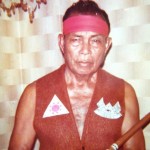
Grandmaster Antonio Ilustrisimo, Courtesy of Bakbakan International and GM Tony Diego
Grandmaster Antonio Ilustrisimo (1902 – 1997) originally came from Santa Fe in Bantayan Island. He came from a family that has a very long history of martials and mystical tradition. His cousin, Floro Villabrialle, was the most famous Arnis master of Hawaii. His youngest uncle, Regino Ellustrisimo, was an Arnis master in Stockton, USA. Both men were mentioned in Dan Inosanto’s book on Filipino martial arts. However, the most famous of his 4 direct paternal uncles, and the most powerful fighter of the 5 brothers (some say he has more than 7 uncles) was Melecio Ilustrisimo, one of the most famous Kali masters of the Philippines of the early 20th Century, being influential in northern Cebu – Bantayan and Bohol islands. All his forbears were expert warriors and were known to posses strange mystical powers.
Grandmaster Ilustrisimo’s students, fondly call him “Tatang” which means “grandfather”. Tatang learnt Arnis under the tutelage of his father (Isidro Illustrisimo) and uncles (especially the famous Melecio Ilustrisimo) in the old way. There were 3 famous Eskrima families in Cebu at that time:- the Ilustrisimos, the Saavedras, and the Romos.
Footwork was one of the first things he had to master. As a tiny boy, he was put on a small table and his teachers would use sticks to beat his legs. He had to learn how to avoid the blows. He was also put on 3 half coconut shells in a triangular pattern and given the same harsh treatment. This footwork is known as Tatlong Bao in the Ilustrisimo family.
As a result he has mastered evasion and dodging at an early age. This is a training that Melecio Ilustrisimo himself thoroughly mastered as he was said to have nailed one foot to the ground and challenge all and sundry to defeat him. No one could, and that footwork is called “Walong Apak” (Nail Footwork) in Kalis Ilustrisimo. These skills of evasive footwork have all been mastered by Grandmaster Antonio Illustrisimo.
He learnt the solo and double baston, espada daga, daga, bolo (sword), dos manos (a long stick/sword – roughly equivalent to the Samurai’s sword) and various “weapons of convenience”. In particular, as a speciality, Grandmaster Ilustrisimo is noted for is his expertise in bladed weapons – something which many modern Grandmasters of Arnis can not lay proper claim to since their real practical experience concentrated on the rattan sticks. (Claims by most systems that they can use swords are disputable and only partially true). This expertise as a swordman is not merely from personal experience and practice, but is the legacy of his family art of Ilustrisimo Kali which is a bladed art that stretches so far back in the family line that nobody could remember when it started.
As a boy, the young Ilustrisimo had a very tough, stubborn, determined and indominatable spirit. When he heard of a far country called ‘America’, he decided to go there – at the age of 9 years old! When his parents would not listen to his panderings, he ‘took’ some family money and a machete, and again, ‘took’ a small rowing boat and paddled out to the sea to what he thought would be America, not realising how far America really is. He fortunately chance across a ship. The sailors aboard were surprised to see a young boy rowing out in the sea. Out of curiousity, perhaps concern as well, there approached him and asked him where he was going. “I am going to America in this boat!” was the confident answer. The sailors rocked in laughter. They somehow persuaded him to come with them. Of course, he did not get to America. But he did sail to a few ports, still not quite realising that America is still very, very far away……….
At a port, he chance on a family friend who recognised him, but not wishing to betray the high ideals of this young boy, he took him to the south as that friend was a Muslim. There the young boy grew up – strong, determined, proud and skillful in combat as ever. He was adopted into a the royal court as an adopted son of the Sultan of Sulu. (This was Hadji Butu who ascended to become HH Hadji Mohammad Jamalul Kiram II, the Sultan of Sulu)
While in the South, he was priviledged to train in the the best of teachers that the royal court could have. He also trained with Pedro Cortes, another very famous master in the Mindanao region, who was used by the government to control the ‘Rebelious South’. Pedro Cortes was a close friend a sparring partner of his father Isidro Ilustrisimo.
Then one day, he was drinking at a beer house, he got into dispute with another man. The man drew his sword to kill Tatang, but the defty young boy beat him to the draw and, with one stroke of his own barong (Tatang’s favourite type of sword), he cut off the enemy’s head. The victim was left a headless man running wildly before collapsing. Since this was in self defence, this would have normally been ‘okay’ under the rules of that Islamic society, but the matter was complicated by his being under the influence of the drink (much frown upon), and plus the fact that the victim was from another royal clan that was a rival to the Sultan’s clan. To avoid inter clan warfare, the Sultan was forced to ‘exiled’ the young offender. The Sultan gave him a gift of money and sent under escort to a British ship to head home. He was only 17 years old then.
He returned to his parent’s place. They had not seen him since he left as a young boy (this indicates his spirit of determination and independence – and his courage to live away from home without his parent’s guidance) and thought he was dead. They were over-joyed to receive a telegram saying he was returning. But they couldn’t recognise him. A proud young man in Muslim dress walked towards them from the ship and it was only when he greeted them that they realised it was him.
He soon left to become a sailor, but when he had the oppotunity, he would continue to train in the fighting tradition of his family line.
Tatang used to hang around “rough places”. He is well known amongst the wharfies and bars. That was where he fought many times and honed his fighting skills. I have met many Arnis masters who are very good in what they do, but some of them privately admitted to me that even they are extremely careful when going to such areas that Tatang frequents because fighting and killing in bar/street fights is very different, and much more dangerous, than fighting an Arnis dual.
His life as a sailor gave him the oppotunity to travel from place to place. This provided oppotunities to contest fighters from other far-off regions – America, India, Europe, Australia…………….. He fought on many occassions, and was never defeated.
For example, he responded to a grandmaster match in Singapore to compete against a great Indonesian Penchak Silat grandmaster. The Indonesian climbed into the ring, warmed up, all ready to fight, but when he faced Tatang, he simply refused to fight and surrendered. Grandmaster Ilustrisimo said that is the highest art – to defeat an opponent without fighting him. Tatang was said to have used his ‘orascion’ or spiritual power to overcome the opponent. Grandmaster Illustrisimo thus won the prize money of $5,000. (Note:- Indonesian masters are experts in the use of spiritual power to overpower their opponents, but in this instance, Tatang’s power must have overwhelmed his expert opponent).
Grandmaster Ilustrisimo used to participate in Arnis matches in the fiestas in the local barrios occasionally when not at sea. However, due to his fondness for the blade, and his reputation as a fighter-killer, not many masters would dare to fight him. He only knows how to fight naturally – without restrictions – something that is not very comfortable for other masters. The only rule is the terms of defeat – when to stop the fight. He laments that he had to accept fights during his travels to practise a little of his art. eg. He fought a master in Calcutta. He also had some fights in the Middle East.
Grandmaster Ilustrisimo, however, had lots of practice during World War II where, as a guerilla, his boss often sent him on missions to kill both Japanese soldiers and local conspirators. He is said to have killed groups of people at a time. So reliable were his services that his code name in the guerilla movement was ‘The Executioner’.
In Manila, Grandmaster Ilustrisimo lived in Tondo, near the wharf area which was a very rough neighbourhood. Intimidation, robberies, muggings, fights and killings were common. Together with his friends (some of whom are well known to Western students of Arnis – Floro Villabraille, Jose Mena and Felicissimo Dizon), he fought these muggers, bullies and intimidators whenever they caused trouble. This ‘Gang of Four’ joked that since they were cleaning the docks of these troublemakers for the Police, they are in fact the ‘De Facto Dock Police’. (Note:- None of them, or their students, were actually employed as Police or security guards there, as some Westerners were lead to believe).
Grandmaster Ilustrisimo hung around his friends whenever he was not at sea. Occassionally, he would spar with them. Accounts independently related by various old sources who hung around them confirmed that Grandmaster Illustrisimo had sparred with Felicissimo Dizon quite a few times and was more than a match for him. It is also said that mutual Arnis friends wanted to arrange a formal match (ie. prize fighting) between Grandmaster Ilustrisimo and Felicissimo Dizon. Grandmaster Ilustrisimo, being a seasoned prize fighter, readily accepted. But the great Dizon turned down the offer citing that Grandmaster Illustrisimo is a larger man, a taller man with a longer reach, and thus they are in different categories and should not be matched. (Dizon was a formidable fighter with few defeats, most notably of which was from the great Illaus Romo. Also, a scheduled match between Dizon, Delphin Lopez and Cacoy Canette did not eventuate also because Dizon failed to turn up – according to Cacoy Canette).
While sojorned in Manila in the late 1930s, a young lad around 15 or 16 years old called Angel Cabales, became a staunch student of Felicissimo Dizon. A few years later, he left for USA (1939) and became internationally famous as the founder of Cabales Serada Eskrima which is very widespread in USA. (Angel was said to have learnt from Tatang too, but both Tatang and his students told me he is not Tatang’s student. He only learnt from Tatang because he knew how good Tatang was. He was regarded as Dizon’s student – Tatang does not pinch the students of his friends. In fact, Tatang only accepted students from the public in the mid 1970s when he was already in his mid seventies. It is admitted that Tatang did show and teach his personal friends, but they were never regarded as ‘students’. They were his friends. Such close friends included Felicissimo Dizon and the famous Floro Villabrialle, who was his cousin. I believe Timoteo Maranga was one such friend during the war time. Besides that, Tatang did not teach anybody who came to enquire)
Grandmaster Ilustrisimo used to frequent bars in the rough areas of Manila. He often got into fights in such hotspots. He had been arrested at least 17 times for killing, but he was always lucky to prove his innocence as self defence and was released every time. The last time he killed was when he was over 90 years old. He nearly went to jail for that.
Grandmaster Ilustrisimo retired from sea-faring in his advanced years, but not from active practice. Even in his old age, he received challenges from young fighters eager to build a name for themselves by unfairly bumping off an old man, but he survived and gave them a hiding instead.
In his advanced years, Grandmaster Ilustrisimo was partially blind, but he can still spar with his students using real bolos (swords) and exert control not to harm them. How does he “see” the student’s incoming bolos when he cannot properly see ordinary objects is still a mystery to most, but Dan Inosanto mentioned in his book that (Ilustrisimo’s cousin) Floro Villabrille’s favourite master was a blind princess. (Some sources indicate that this ‘princess’ was actually not blind, but partially blind, just like Tatang. And not a princess of Samar, nor Princess Josephina, but daughter of a chief. She was known to possess some mystical powers. Also, this story later as changed by later generations to ‘main’ or ‘best’ teacher - instead of ‘favourite’ teacher – in the sentimental sense, not favourite as ‘best’ teacher). Tatang insisted that while in Manila, he actually tutored Floro Villabrialle, who, earlier, was a student of his uncle Melecio Ilustrisimo. Tatang and was ‘unimpressed’ that the Americans were given the impression that Villabrialle’s main or best teacher was Princess Josephina.
——————————————————————————————
Antonio “Tatang” Ilustrisimo (1904 – 1997) was the Grand Master of Kali Ilustrisimo, a Filipino martial art bearing his family name.
Early life
Born in Bagong, Bantayan, Cebu in 1904. As a boy he studied eskrima from his father. At the age of nine he decided to travel to the United States, and stowed away on a boat he thought was headed for America. In actuality, he arrived in Mindanao, in the southern Philippine islands.
The Martial Arts
Antonio Alulud Ilustrisimo was one of the most well respected eskrimadors of the Philippines; He is famed for winning countless duels and street encounters, as well as serving as a guerrilla against the invading Japanese forces during World War II. GM Ilustrisimo was never defeated in combat, and earnt great respect as a result of his brave exploits against the Japanese.
In 1976 Antonio ‘Tatang’ Ilustrisimo accepted his first students Antonio Diego and Epifanio ‘Yuli’ Romo. After Tatang’s passing in 1997, Tony Diego was elected head of Kali Ilustrisimo. Other notable students include – Rey Galang, Christopher Ricketts and Edgar Sulite.
Publications
Antonio Ilustrisimo has been featured in many periodicals and Martial Arts publications. His First apperance was in The book titled Masters of Arnis, Kali, and Eskrima by Edgar Sulite. His life and art were also featured in the book titled Filipino Martial Culture by Mark Wiley. The art of Kalis Ilustrisimo had a section in the book Filipino Fighting Arts: Theory and Practice by Mark Wiley. The book titled The Secrets of Kalis Ilustrisimo was released in the United States. It was authored by two of his most prominent students, Antonio Diego and Christopher Ricketts.

Questions by David Foggie Interviewed by Dino Flores. Answers by Master Ricketts given in Tagalog, Translation by Dino Flores. Interview commenced 12 th February 2006 and conducted over a span of three months in the form of casual conversation by Dino Flores in Los Angeles to San Diego, California U.S.A as well as Las Vegas. When Dino was asked by Master Ricketts to assist him with the interview, the questions to the answers were very limited in information. However with Master Ricketts now able to answer the questions in the Filipino “Tagalog” language, the project began to flow and paint a clearer picture of Master Ricketts incredible achievements and contributions to the world of martial arts.
Grandmaster Christopher ’Topher’ Ricketts Interview
Grandmaster Christopher N. Ricketts or ‘Master Topher ‘is Chief Instructor of Bakbakan International whose motto is “Matira Matibay” (The Best of the Best). Concerned with training and passing on his knowledge to students rather than collecting accolades and titles, Master Topher’s skills and credentials are impeccable and second to none; he is one of the best of the best.
A senior disciple of the revered Grandmaster Antonio Ilustrisimo and one of the 5 Pillars of Kali Ilustrisimo, he is the highest ranking living instructor in Lameco Eskrima, having trained personally with Grandmaster Edgar Sulite. With teaching credentials in several martial arts systems including Ngo Cho Kuen (5 Ancestor Fist), Sagasa Filipino Kickboxing as well as being a professional boxing trainer, he has dedicated his life to the martial arts and other fighting systems.
With his brother Ronnie Ricketts being a well known and respected action star in Philippine movies, Master Topher has provided his vast experience in the fighting arts to choreograph fight scenes.
Through an introduction from my teacher Grandmaster Roland Dantes in 1998, I have been fortunate to benefit from Master Topher’s extensive knowledge and experience.
Knowing the high regard my instructor, Roland Dantes and many other respected elders of FMA hold Master Topher and having witnessed his immense skills, it was an opportunity not to be missed.
When I first observed Master Topher demonstrate Kali Ilustrisimo at his home, I knew that I was in the presence of a genuine master of Kali Ilustrisimo. During our training sessions, the true scope of Master Topher’s knowledge became apparent as did his effective use of body mechanics. Under Master Topher’s instruction, I was introduced to the principles and techniques which form the foundation and in fact, the nucleus or core of Kali Ilustrisimo. With a sharp eye for perfect form and understanding, Master Topher meticulously dissected each technique and corrected even the minutest nuances until he was satisfied.
My time spent training under Master Topher has afforded me the opportunity to see the various aspects of this remarkable martial artist. A remarkable man, he is a fighter, teacher and friend to his students. Martial arts are meant to be about honor, respect, integrity, loyalty and dedication. Master Topher embodies these traits and as such, it is easy to see why Grandmaster Roland Dantes and many other highly respected masters are his friends and respect him.
It was with the approval of my teacher, Grandmaster Roland Dantes, I began studying Kali lIustrisimo under Master Topher and as such, I consider him also to be my teacher. More importantly, I consider him to be a respected, loyal and much valued friend. It is my pleasure and honor to present, Grandmaster Christopher ‘Topher’ Ricketts.
Bakbakan means something along the lines of a free for all brawl. Bakbakan was founded in 1967 by a group of instructors from various styles of martial arts in the Philippines. Prior to the organization becoming a bastion of martial arts in the Philippines, the main objective of the original members was to elevate their fighting skills through constant full contact sparring.
Prior to Kali Ilustrisimo my training included the Rapillon style of Mang Sciano Cleope in 1967. He was a well-known eskrimador from Quezon province of the Philippines and I was a training partner of his son, Edgar Cleope. For a little while I trained with Jimmy Gales in his arnis style which he called Sphinx. He used the centro baston (central grip) and susi (inverted grip) styles of wielding a stick. I also trained with Doc Lengson in the Arnis Federation of the Philippines style from 1973-1978.
I was introduced to Tatang by my good friend Alex Co, a driving force in the Philippine martial arts world. It was the same time that I met Edgar Sulite, Yuli Romo and Tony Diego. When we met for some reason the old man took a liking to me and thus I was accepted as one of his students.
Various strategies attracted me to Tatang’s method, such as being direct, simple and to the point. It has very few flowery movements and there is a natural flow with continuous movement, like a real fight.
Once you truly understand the fundamentals, you respond instinctively without thought and respond appropriately to a situation. Tatang has proven this on countless occasions just as it has assisted me on occasion. It appears simple on the surface, yet in reality there is a deeper true meaning.
A true practitioner of Kali Ilustrisimo will have totally instinctive reaction with no set pattern. Tatang never responded the same way to the same angle of attack. He movements were so natural and a wonder to behold.
Tatang did not teach you in the traditional sense. If you simulated an attack angle, he would instinctively (and painfully) respond. It was up to you to understand and absorb the techniques used. There was no progression, forms or structure. The main structures and progressions being taught to the public these days are individual interpretations of the original 5 pillars of Kali Ilustrisimo. The 5 pillars of Ilustrisimo being Tony Diego, Yuli Romo, Rey Galang, Edgar Sulite and myself.
After Tatang’s death, all kinds of people came out of the woodwork making all manner of claims on how the old man moved. Fortunately I am in possession of hundreds of hours of video footage taken of Tatang in action over a period of 15 years. It can confirm and dispute many of the claims out there based on this evidence. Anybody who doubts this is welcome to view the archives. Let your own eyes be the judge.
Before systemization, Ilustrisimo’s art was still raw and pure. Almost virgin like, as prior to our pursuit it was only revealed in a real situation. It was free of showmanship, direct and purely functional for combat; however it was difficult to learn and always painful, as you usually had to get hit for the technique to be revealed. Only those with time, dedication and a high threshold for pain and tolerance were able to eventually understand Ilustrisimo’s methods.
The good points about systemization is that it is easier to teach and a lot less painful! Keep in mind though that systemization by someone other than the founder is their own interpretation. This can be seen in the different way each of the five pillars of Ilustrisimo teaches the art. There are many similarities but there are also differences, reflecting the experience of each individual. Tatang was one of a kind; that will likely never be replicated.
Some of the primary fighting strategies of Kali Ilustrisimo include: de cadena, sak sak, bagsak, and V-strike. These are mainly finishing moves, as in a real blade confrontation it is over quickly.
Kali Ilustrisimo is definitely a sword-based art; even the stick is treated as a sword. Kali means sword in one of the dialects of the Philippines, thus Kali Ilustrisimo means the sword of Ilustrisimo. The rattan stick is a training device that represents the sword.
There is no doubt that they are both deadly weapons. However, there are differences. In non-bladed arts, practitioners tend to grab to grab the stick in a way that if it were a blade, they would surely be cut. In non-bladed tournaments the participants hit each other just as much as they get hit. There is no respect for the weapon or defense. In a bladed match, they would both be dead. Maybe it is good for a sport, but not for the bladed arts, as long as the distinction is made.
Punong Guro Edgar G. Sulite asked this question of Tatang before he died. A student of ours, Steve Tarani, was present while I filmed the interview. With respects to the departed, I will leave it at that.
Floro Villabrille married a niece of Ilustrisimo. He was a student. I will leave it at that.
Tatang was a pure fighter. He had little interest in teaching. It was not until he was in his 80s and retired that he started teaching in Luneta Park. He only taught to get a little spending money for extra curricular fun.
As for developing and instilling specific qualities in his students, Tatang couldn’t care less. His main concern was it saved his life on his many adventures as a merchant marine and guerilla fighter in World War II.
The emphasis was on spontaneity and pain. One of us would simulate an attack, he would instinctively and painfully react, and then during our free time we would try and decipher what we had seen. Because there was no curriculum, we had to learn techniques by experiencing them.
Even in his old age, Tatang’s timing was remarkable. In all my eskrima experience, none have come close.
During the whole time I was training, I never heard Tatang use any of these terms. The five pillars referred it as Kali Ilustrisimo only so we could have something to call it. Tatang had no name for the art in my observation. It was only after his death that all these other versions began to surface.
I think Tatang would be saddened that politics has infected our group. When it was still the core group, practice was fun for many years. None of us were doing it for self-promotion or ego inflation. It was like a family. It was not until people who were not in the original group made their way in. This is where the problems began. Unfortunately, there will always be people that exist who will say or do anything to become “famous”.
This could be a rather lengthy answer worthy of volumes. Perhaps I will write a second book on Kali Ilustrisimo to answer these questions.
I did not meet the uncles of Antonio Ilustrisimo personally. However, during his research for his landmark book, ‘Masters of Arnis, Kali and Eskrima’, Edgar Sulite met them both on Bantayan Island. According to Edgar, their styles, although founded upon the same root system, were now different. In other words, Tatang’s style had evolved through a lifetime of actual combat experience throughout the Philippines and the world.
Tatang was respected by all. I never witnessed anyone dare challenge him.
There are so many. Very few had the privilege to spar Tatang regularly as I did, but there is one occasion I will not soon forget.
In general, Tatang was a respectful gentleman. However, on this particular day I kept telling Tatang that he was not able to hit me. I was doing this in order to see how the old man would press his attack and possibly reveal some new strategies and techniques; a
sacrifice so to speak. Immediately Tatang stood up and began striking me in the head. He quickly feinted left, and then suddenly struck me in the right eye with an inside De Cadena attack. Tatang struck me so hard I actually believed he had knocked my eye ball out and so I dropped to the ground in search of my eyeball! When I realized my eye was still intact, I stood up and Tatang asked if I was okay. When I said I was fine, without hesitation he continued his barrage of attacks upon me. Tatang was always willing to fight to the end, even in training sessions. Now that he has gone, even the painful memories have become fond memories.
Lutang means to float and it is a unique footwork of Tatang’s. It involves temporarily being on one foot while the other leg “floats”. Although it looks unusually elegant, it can generate tremendous power and reach. It also allows you to move in and out and then back in from various ranges of combat in an instant. Classic Tatang; simple yet sophisticated, beautiful but deadly.
Throughout the years up until his death, I was constantly learning, dissecting, experimenting, analyzing and observing his movements. After Tatang’s death, I continued to do the same with what I had retained. Now I have come a full circle back to his original techniques: minimal, uncomplicated, and effective. When I went back and reviewed the hundreds of hours of film archives on Tatang, it confirmed that I am on the right path. And still in wonder of my teacher’s abilities.
My teaching progressions teach a student to instinctively react with the techniques of Ilustrisimo. However, it is not something you learn overnight.
Research, review, dissect, spar and dedicated practice, practice, practice.
My experience as a professional boxing trainer when I had a stable of fighters and the intense workouts of Doc Lengson’s KAFEPHIL style were what led me to appreciate the importance of physical conditioning.
During the KAFEPHIL days, I was introduced to Doc by an instructor under him, Chito Santos. Doc took a liking to me and adopted me in a way. I not only look to him as a teacher, but also a father figure.
Drills are always good to condition your movements and mind. As long as your honest with yourself and realize that actual combat is a lot simpler, direct, and bloodier than drills.
My emphasis is on constant repetition of basic techniques and sparring.
Simplicity. Never wrestle for a disarm. Never look for a disarm. Only do it if an opportunity arises. Always treat the weapon as a blade.
Yes, knowledge is power. Better to have something, than nothing. Just be realistic about what would actually work.
Edgar G. Sulite was one of my closest friends. I met him through another close friend of mine, Alex Co, a pioneer publisher in the Philippines of martial arts books and magazines. Alex asked me to check whether Edgar was the real McCoy because Edgar wanted to discuss the publication of a book. After meeting Edgar, I reported that he was indeed the real thing and the rest is history. Alex ended up publishing all three of Edgar’s books: Secrets of Arnis, Advanced Balisong and Masters of Arnis, Kali and Eskrima.
The Masters of Anis, Kali and Eskrima was a landmark book because it was the first time a researcher traveled throughout the entire Philippines to research the art and publish it in a book. It revealed many relatively unknown systems to the world and opened many doors for future researchers and practitioners. I am happy to have been a participant in bringing these projects to light.
Lameco Eskrima was already founded at the time. However it was still evolving and Kali Ilustrisimo was the finishing touch. Training with Edgar was fun and enlightening for the both of us and we became training partners. There were lots of live and instinctive drills. Constant research, experimentation and sparring, sparring, sparring. We had lots of painful bumps and bruises because back then we had no safety gear. It was very educational for the both of us.
Punong Guro Edgar G. Sulite was a true scholar, gentleman and warrior.
No. I will leave the future to his son, Edgar Sulite Jr. He is my official appointed heir to the Lameco Eskrima International system. Edgar Sulite Jr trained under me for many years in the Philippines while his father was in the USA preparing for the eventual arrival of the family. I trust Edgar Sulite Jr. to make many wise decisions. He is like family to me.
I met Master Roland Dantes in my KAFEPHIL days when I was young. His brother Johnny Pintoy, was a champion in the tournament circuit. The first time I met Master Roland Dantes, he was a judge on the first ever televised karate versus boxing match in which I was representing karate. There was some controversy concerning illegal biting and elbows. Regardless of the outcome, Master Roland Dantes gained my respect and made an impression on me as someone who was humble and fair, regardless of his fame and status. We have been close friends ever since.
I am a true lover of the warrior arts from forms to practical applications. I do it because I truly enjoy it. Boxing has some of the best full contact, conditioning and training methods that exist.
No not at all. I enjoy every aspect of learning.
Naturally I am concerned with the preservation of all the arts in their purest form. Personally, my main concern is with Kali Ilustrisimo. After the death of Tatang, many people suddenly appeared claiming to represent Kali Ilustrisimo. These people are mainly good at talking and making theories. However, this is not enough. You must also practice Tatang’s real techniques and be able to apply them.
Many people are good at talking, but when it comes to sparring they either decline or perform very badly. Unfortunately, there are people exploiting the Ilustrisimo name but are actually teaching their own personal vision. When teaching you must make the distinction between your version and the original. If people are not honest and this keeps up, the art will continue to be watered down and may eventually be lost.
Also since the passing of Tatang, there have been many people publicly proclaiming to be “certified” by Tatang. There are all manners of scenarios: some spent a week, a month or just took a photo with Tatang to become “certified”. There are very few credible martial arts that will even consider certifying anyone with even two years of dedicated training, let alone two weeks. There is even a story of people helping Tatang with his medical bills in his twilight years and thus being awarded certification for their help.
There will always be unscrupulous people that will say anything to become “known” in the martial arts, even at the expense of the art. Because of these facts, my main focus is now is concentration on Tatang’s original core techniques, the roots of his system which I always differentiate from drills developed by the five pillars. Who is to say what is original and what is not? On top of the fact I was one of his most physically dedicated students, the hundreds of hours of Tatang’s film archives that I have of him in action speak for themselves. The majority of what is being pushed as Kali Ilustrisimo was never done by Tatang. Let your eyes be the judge. Once again, personal interpretations.
Being one of the five pillars of Kali Ilustrisimo and spending countless hours with Tatang, I take great offense at the actions of pretenders. I have dedicated a good portion of my life to this art. It is a part of me. Regardless of these facts, I will always attempt to settle misunderstandings as a gentleman, first and foremost. However, if this course of action fails, I will not hesitate to settle it as an Eskrimador. It is after all, the “Warrior Arts” and not the “Verbal Debating Arts”. I have full confidence in what Tatang has passed on to me; most do not.
In the Philippines, it is always for self-defense.
Doc Lengson started Arnis with Sinawali and Cinko Teros systems as he is from Pangasinan province in the Philippines. When he first met Remy Presas, Remy was still Balintawak and Doc was impressed with the movements and added some concepts to his system. Doc and Remy met before Modern Arnis. Most of the circular motions, he learned from Johnny Chiuten who was a kung fu and Balintawak master.
Doc Lengson and Remy Presas met before the formation of Modern Arnis. They were training partners. Remy learned sinawali and Cingko Teros from Doc Lengson, which he put in Modern Arnis. Remy also learned karate from Doc Lengson, as he was considered the best in the Philippines at that time. In return, Remy taught him some of his Balintawak techniques. It was also Doc Lengson who came up with the name Modern Arnis.
Doc Lengson developed Sagasa through constant full-contact tournaments with other martial arts associations. At the time, he was considered the best in karate in the Philippines. Because of this, all the other organizations would gang up on his group and go as far as the judges cheating in their decisions during tournaments. Consequently, Doc Lengson had to come up with techniques that would make it clear that they were the undisputed winner of a competition. These techniques were developed primarily through Master Johnny Chiuten and his kung fu style, in which Doc Lengson developed the training method for teaching. Initially these techniques had been secret, as Doc Lengson used it for his position in KAFEPHIL’s election through sparring. In other words, whoever won all the sparring matches among the candidates became the head of KAFEPHIL.
The emphasis was always on the hips and always exaggerated, so to the untrained eye it would look unusual. All real power comes from the hips and not just for attacking, but also evading and defending.
Doc Lengson developed the Sagasa series in collaboration with Johnny Chiuten.
Sagasa Kickboxing is one of the core systems of Bakbakan. Among other things, it led Bakbakan to emphasize practical and functional techniques with full contact sparring. It also underlined the importance of the hip and body placement in sparring.
Yes. Most tournaments forget about defense and just press the attack. They get hit as many times as they hit with little respect for the weapon. They rarely do the art justice. A tournament with protective gear can be good as long as the rules, judges and participants respect the true capabilities of a live weapon at all times. Another way to rectify this is to remove the helmet and other protective gear and use a full live stick. But how many people are willing to do that?
I am now more practical than realistic. When I was young, I practiced controlled sparring and pulled my punches. I used to think that was it until I found out the hard way in a street fight.
Constant repetition of basics, regular full-contact sparring and honesty with yourself.
Constant repetition of basics, regular full-contact sparring and honesty with yourself.
For a student to be able to eventually naturally execute a technique correctly without thought. Become an instinctive fighter.
Yes. Technology may change and sometimes even fail, but the physical human body is the same.
My brother Ronnie is an actor, director and has a production company. Whenever he has the opportunity he promotes the Filipino warrior arts in his movies.
Yes. I am very proud and humbled at how well we are received around the world.
I am currently teaching in the United States and have recently done seminars in California and Nevada. I am assisted by my son, Bruce and Dino Flores of Lameco Eskrima SOG. Dino has been training under me since 1997, after the passing of his teacher and my friend Edgar Sulite. Presently I am offering small group and private lessons, as well as seminars.
Kali Ilustrisimo is being very well received as most of the participants have heard of it. Once they experience it in person, it usually is an eye-opener for practitioners of many styles. It is especially an eye-opener for those who have “supposedly” been learning Kali Ilustrisimo.
The difference is Kali Ilustrisimo is Topher Ricketts and Bakbakan Kali is Rey Galang’s.
I’ll be there soon. Expect Kali Ilustrisimo in its most combative, practical and purest form.
Walang anuman. You are welcome and thank you for your support and interest in the warrior arts of the Philippines.


Lameco Eskrima SOG Los Angeles • Kali Ilustrisimo Los Angeles The Kapisanang Mandirigma Institute teaches several forms of Philippine Warrior Arts. Although they are related they are kept and taught separately in order to maintain purity and original intent of each program. LAMECO ESKRIMA SOG METHOD / LAMECO BACKYARD ESKRIMA - Lameco Eskrima - S.O.G. Method. The Fighting method of Punong Guro Edgar Sulite as taught to his "Invitation Only" group. Also known as … [Read More...]
PAGGALANG SA PAG - UMPISA:
Salutation at the beginning of training.
KARANUNGAN:
I come seeking Knowledge.
PAGGALANG:
I offer you my Respect.
KATAPATAN
I offer you my Loyalty.
NAKAHANDA SA PAGSASANAY
I am ready to train.
Copyright © 2025 · Genesis Framework · WordPress · Log in